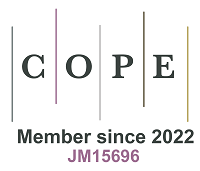REFERENCES
1. Ritchie H, Roser M. Energy. Available from: https://ourworldindata.org/energy [Last accessed on 22 Jun 2021].
2. Corfee-Morlot J(3Cs), Parks P, Ogunleye J, Ayeni F. Achieving clean energy access in sub-Saharan Africa. A case study for the OECD, UN Environment, World Bank project: Financing Climate Futures: Rethinking Infrastructure. Available from: https://www.oecd.org/environment/cc/climate-futures/Achieving-clean-energy-access-Sub-Saharan-Africa.pdf [Last accessed on 22 Jun 2021].
3. Blimpo MP, Cosgrove-Davies M. Electricity access in Sub-Saharan Africa: uptake, reliability, and complementary factors for economic impact. Africa Development Forum. Washington, DC: World Bank; 2019. Available from: https://openknowledge.worldbank.org/handle/10986/31333 [Last accessed on 22 Jun 2021].
4. World Energy Outlook. Report extract Electricity. Available from: https://www.iea.org/reports/world-energy-outlook-2018/electricity [Last accessed on 22 Jun 2021].
5. World Bank Group. Africa’s pulse, No. 17, April 2018. Available from: https://openknowledge.worldbank.org/handle/10986/29667 [Last accessed on 22 Jun 2021].
6. Anvari-Moghaddam A, Mohammadi-ivatloo B, Asadi S, Larsen K, Shaidehpour M. Sustainable energy systems planning, integration, and management. Appl Sci 2019;9:4451.
7. Najafi J, Peiravi A, Anvari-moghaddam A. Enhancing integrated power and water distribution networks seismic resilience leveraging microgrids. Sustainability 2020;12:2167.
8. Trotter PA, Mcmanus MC, Maconachie R. Electricity planning and implementation in sub-Saharan Africa: a systematic review. Renewable and Sustainable Energy Reviews 2017;74:1189-209.
9. Hartvigsson E, Ehnberg J, Ahlgren E, Molander S. Assessment of load profiles in minigrids: a case in Tanzania. Proceedings of 50th international Universities Power Engineering Conference (UPEC) Stoke on Trent, UK; .
10. Bell K. Methods and tools for planning the future power system: issues and priorities. Available from: https://strathprints.strath.ac.uk/54341/1/Bell_IET_2015_Methods_and_tools_for_planning_the_future_power_system.pdf [Last accessed on 22 Jun 2021].
11. Bebic J. Power system planning: emerging practices suitable for evaluating the impact of high-penetration photovoltaics. National Renewable Energy Laboratory 2008; doi: 10.2172/924647.
12. Hirsch A, Parag Y, Guerrero J. Microgrids: a review of technologies, key drivers, and outstanding issues. Renewable and Sustainable Energy Reviews 2018;90:402-11.
13. Wang Y, Li F, Yu H, et al. Optimal operation of microgrid with multi-energy complementary based on moth flame optimization algorithm. Energy Sources, Part A: Recovery, Utilization, and Environmental Effects 2020;42:785-806.
14. Wu X, Shi S, Wang Z. Microgrid planning considering the supply adequacy of critical loads under the uncertain formation of sub-microgrids. Sustainability 2019;11:4683.
15. Mumtaz F, Bayram IS. Planning, operation, and protection of microgrids: an overview. Energy Procedia 2017;107:94-100.
16. Hafez O, Bhattacharya K. Optimal planning and design of a renewable energy based supply system for microgrids. Renewable Energy 2012;45:7-15.
17. Gamarra C, Guerrero JM. Computational optimization techniques applied to microgrids planning: a review. Renewable and Sustainable Energy Reviews 2015;48:413-24.
18. Navidi M, Tafreshi SMM, Anvari-moghaddam A. A game theoretical approach for sub-transmission and generation expansion planning utilizing multi-regional energy systems. International Journal of Electrical Power & Energy Systems 2020;118:105758.
19. Kumar A, Sah B, Singh AR, et al. A review of multi criteria decision making (MCDM) towards sustainable renewable energy development. Renewable and Sustainable Energy Reviews 2017;69:596-609.
20. Kaya İ, Çolak M, Terzi F. Use of MCDM techniques for energy policy and decision-making problems: a review. Int J Energy Res 2018;42:2344-72.
21. Alizadeh R, Soltanisehat L, Lund PD, Zamanisabzi H. Improving renewable energy policy planning and decision-making through a hybrid MCDM method. Energy Policy 2020;137:111174.
22. He J, Yang X, Liu Y, Huang W, Chen J, Li D. Comprehensive Evaluation of Microgrid Planning Scheme based on AHP-Entropy method.. , 2019;.
23. Bahramara S, Moghaddam MP, Haghifam M. Optimal planning of hybrid renewable energy systems using HOMER: a review. Renewable and Sustainable Energy Reviews 2016;62:609-20.
24. Jung J, Villaran M. Optimal planning and design of hybrid renewable energy systems for microgrids. Renewable and Sustainable Energy Reviews 2017;75:180-91.
25. Fulzele JB, Dutt S. Optimium planning of hybrid renewable energy system using HOMER. IJECE 2012;2:68-74.
26. Heleno M, Domenech BC, Cardoso G, Mashayekh S. The microgrid investment and planning in rural locations. Microgrids for rural areas: research and case studies. UK: The Institution of Engineering and Technology; 2020. pp. 33-53.
27. Narayan A. A Framework for microgrid planning using multidisciplinary design optimization. Available from: http://hdl.handle.net/10012/9971 [Last accessed on 22 Jun 2021].
28. Jiménez-Estévez GA, Palma-Behnke R, Ortiz-Villalba D, Mata ON, Montes CS. It takes a village: social SCADA and approaches to community engagement in iolated microgrids. IEEE Power and Energy Mag 2014;12:60-9.
29. Vafaei M, Kazerani M. Optimal unit-sizing of a wind-hydrogen-diesel microgrid system for a remote community. 2011 IEEE Trondheim PowerTech 2011:1-7.
30. Logenthiran T, Srinivasan D, Khambadkone AM, Sundar Raj T. Optimal sizing of an islanded microgrid using evolutionary strategy.. , ;.
31. Erdinc O, Uzunoglu M. Optimum design of hybrid renewable energy systems: overview of different approaches. Renewable and Sustainable Energy Reviews 2012;16:1412-25.
32. Chen SX, Gooi HB, Wang MQ. Sizing of Energy Storage for Microgrids. IEEE Trans Smart Grid 2012;3:142-51.
33. Fan Y, Rimali V, Tang M, Nayar C. Design and implementation of stand-alone smart grid employing renewable energy resources on Pulau Ubin Island of Singapore.. , ;.
34. Kumaravel S, Ashok S, Balamurugan P. Techno-economic feasibility study of biomass based hybrid renewable energy system for microgrid application. Proceedings of the 2012 international conference on green technology 2012. pp. 107-16.
35. U.S. Agency for International Development. Tanzania power Africa fact sheet. Available from: https://www.usaid.gov/powerafrica/tanzania [Last accessed on 22 Jun 2021].
36. The World Bank. Increasing electricity access in Tanzania to reduce poverty. Available from: https://www.worldbank.org/en/results/2016/12/06/increasing-electricity-access-in-tanzania-to-reduce-poverty [Last accessed on 22 Jun 2021].
37. Scarlat N, Dallemand J, Fahl F. Biogas: Developments and perspectives in Europe. Renewable Energy 2018;129:457-72.
38. FurtherAfrica. Tanzania has potential to build 700,000 biogas digesters. Available from: https://furtherafrica.com/2018/01/08/tanzania-has-potential-to-build-700000-biogas-digesters/ [Last accessed on 22 Jun 2021].
39. HOMER Energy. Available from: https://www.homerenergy.com [Last accessed on 22 Jun 2021].
40. PV Module Product Datasheet MaxPower CS6X-P. Available from: https://www.renewenergy.com.au/wp-content/uploads/Datasheet_CS6X-P_au.pdf [Last accessed on 22 Jun 2021].
41. GILDEMEISTER energy solutions. CellCube. The storage system for intelligent power supply. Available from: https://vsunenergy.com.au/wp-content/uploads/2016/11/CellCube-Brochure.pdf [Last accessed on 22 Jun 2021].
42. Australian Wind and Solar. AWS HC wind turbines. Available from: https://www.australianwindandsolar.com/aws-hc-wind-turbines [Last accessed on 22 Jun 2021].
43. Natel energy. FREE JET hydroEngine®. Available from: http://www.natelenergy.com/wp-content/uploads/2016/07/Natel_FREE_JET_hydroEngine_jul2016.pdf [Last accessed on 22 Jun 2021].
44. Akinyele D. Analysis of photovoltaic mini-grid systems for remote locations: a techno-economic approach. Int J Energy Res 2018;42:1363-80.
45. National Renewable Energy Lab database. Solar resource data and tools. Available from: https://www.nrel.gov/grid/solar-resource/renewable-resource-data.html [Last accessed on 22 Jun 2021].
46. NASA. NASA prediction of worldwide energy resources. Available from: https://power.larc.nasa.gov [Last accessed on 22 Jun 2021].
47. Algarín CR, Llanos AP, Castro AO. An Analytic Hierarchy Process Based Approach for Evaluating Renewable Energy Sources. International Journal of Energy Economics and Policy 2017;7:38-47.
48. Bohra SS, Anvari-Moghaddam A, Mohammadi-Ivatloo B. AHP-Assisted Multi-Criteria Decision-MakingModel for Planning of Microgrids.. , 2019;.
49. Cheng C. Group opinion aggregationbased on a grading process: a method for constructing triangular fuzzy numbers. Computers & Mathematics with Applications 2004;48:1619-32.
50. Saaty TL. A scaling method for priorities in hierarchical structures. J Math Psychol 1977;15:234-81.





